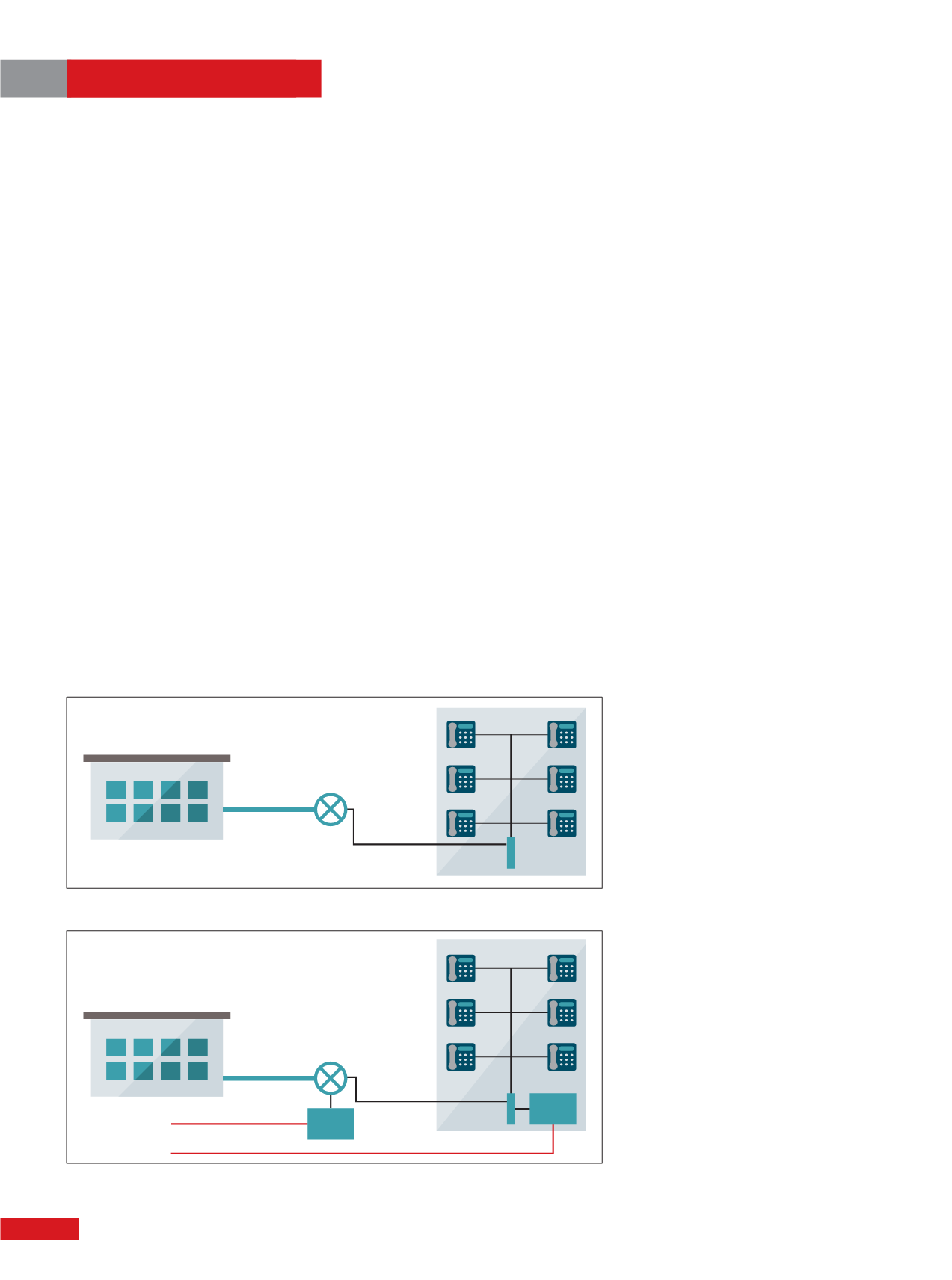

5 8
E L E CT R I C AL CONNE CT I ON
S P R I NG 2 01 5
NETWORKING
Fibre – with a twist
T
he talk goes on and on – FTTN,
FTTB, FTTxxx – and we wonder
whether we should care, what we
need to know and what we can do.
This is probably in the minds of many
cablers when they hear or see information
flying backwards and forwards about the
National Broadband Network (NBN).
The NBN is rolling out more slowly than
most of us would like, and most of us are
keen to get it. We know it will be rolled out
using a range of technologies.
With the technologies being deployed you
will get much higher speeds than at present,
so the technology is not so important.
The problem lies in apartment buildings
and townhouse complexes – or as the industry
calls them, multi-dwelling units (MDUs). An
MDUmay have two or more network service
providers operating fromdifferent locations.
To start, it is important to understand how
telecommunications services are currently
delivered to an MDU using the existing
copper network.
Figure 1 shows the copper cable from
the telephone exchange to a pillar on
the street, and from the pillar to the main
distribution frame (MDF) in the building.
This copper is owned, operated and
maintained by the carrier.
Copper cable then runs from the MDF
to telephone outlets in each apartment.
This customer cabling belongs to the
owners corporation (body corporate),
which operates and manages the common
property. Fibre to the node (FTTN) and fibre
to the building (FTTB) will connect to this
existing copper cabling (Figure 2).
FTTN will most commonly be connected
to existing pillars in the street, and FTTB is
connected to the MDF in the building. If
Provider A wants to connect to the pillar it
must have an agreement with the owner
of the copper network in the street (Telstra
in Australia) in addition to other approvals
and authorities.
If Provider B wants to connect to the MDF
it will need permission from the owners
corporation to install equipment in the
building and add a cabling termination
module to the MDF.
From a purely mechanical perspective
these solutions seem to be able to coexist.
Unfortunately, from a technical transmission
perspective, there are issues involving the
vectored VDSL (very high bit rate digital
subscriber line) technology used for FTTN
and in some cases FTTB.
The biggest challenge in transmitting
high-speed data on the existing copper
cable is the noise generated by the
signal. The twisted copper cable used for
telephony behaves more like an antenna as
the signal frequency increases.
When all that was transmitted on a
telephone cable was the plain old telephone
service, then the highest frequency was
4,000Hz. With Vectored VDSL the highest
frequencies being pushed along a twisted
pair can be as high as 30MHz. At such high
frequencies the twisted pair cable is a very
good antenna and radiates these signals.
Figure 3 is a closer view of the twisted pair
that runs from the node to the modem in
the customer’s dwelling. It shows the noise
from one pair, but all pairs will be emanating
noise. Because this twisted pair is such a
good antenna, it radiates the signal it is
Network providers bringing
high-speed communications
to multi-dwelling units have a
noise issue to resolve.
Ian Millner
explains.
Figure 1.
Figure 2.
Copper
distribution
cable
MDF
MDU
Copper cable
Telephone exchange
Pillar
Copper cable
Fibre to the node (FTTN)
Fibre to the building (FTTB)
PROVIDER B
PROVIDER A
Copper
distribution
cable
Telephone exchange
MDF
MDU
DSLAM
DSLAM
Pillar
















